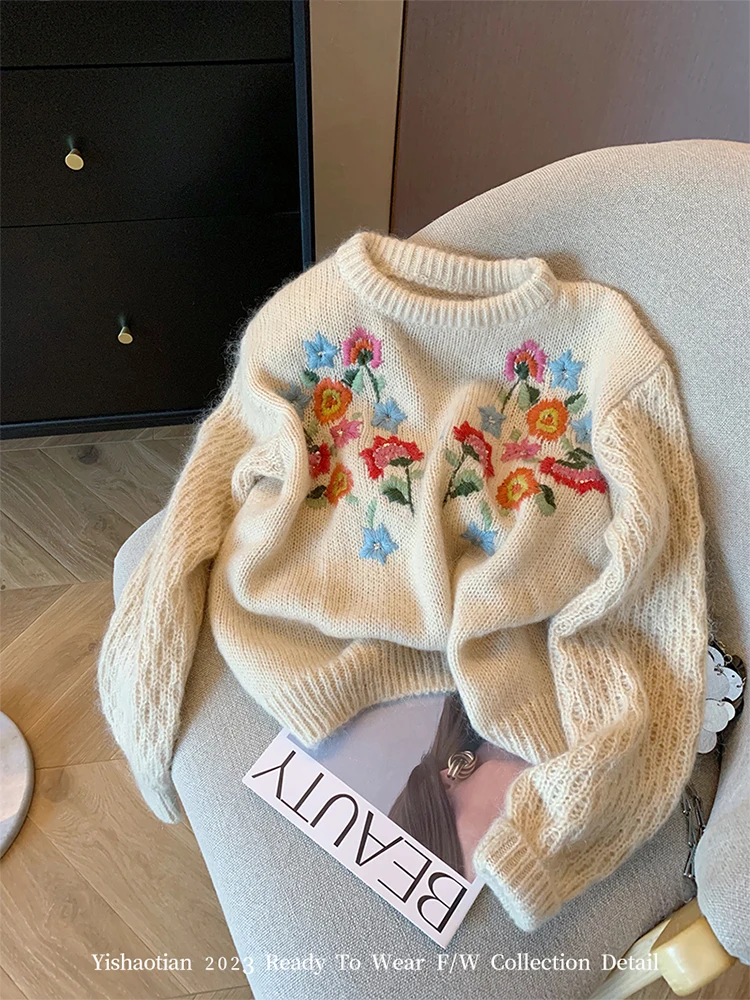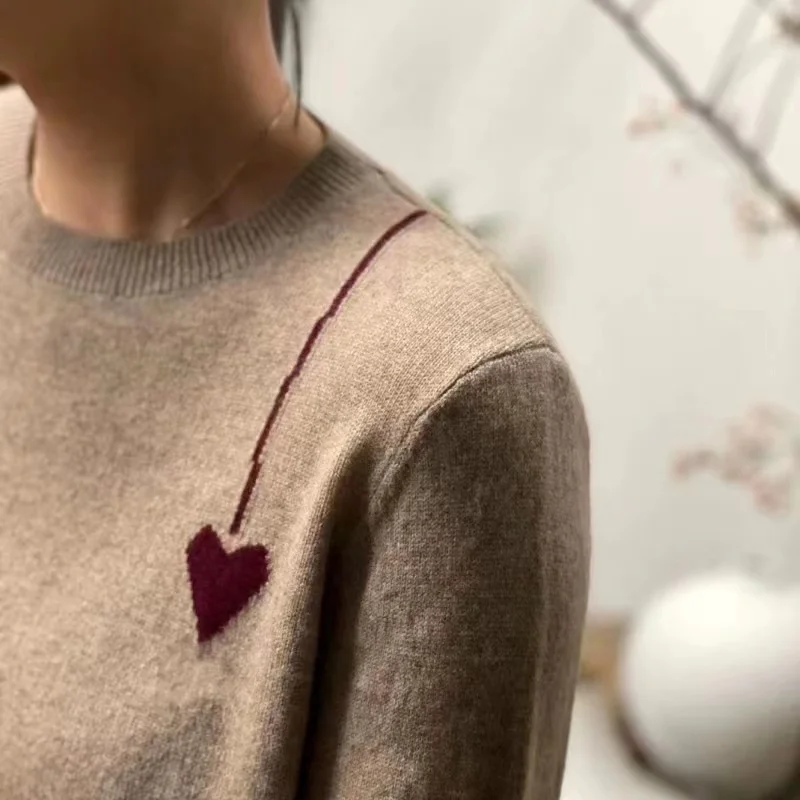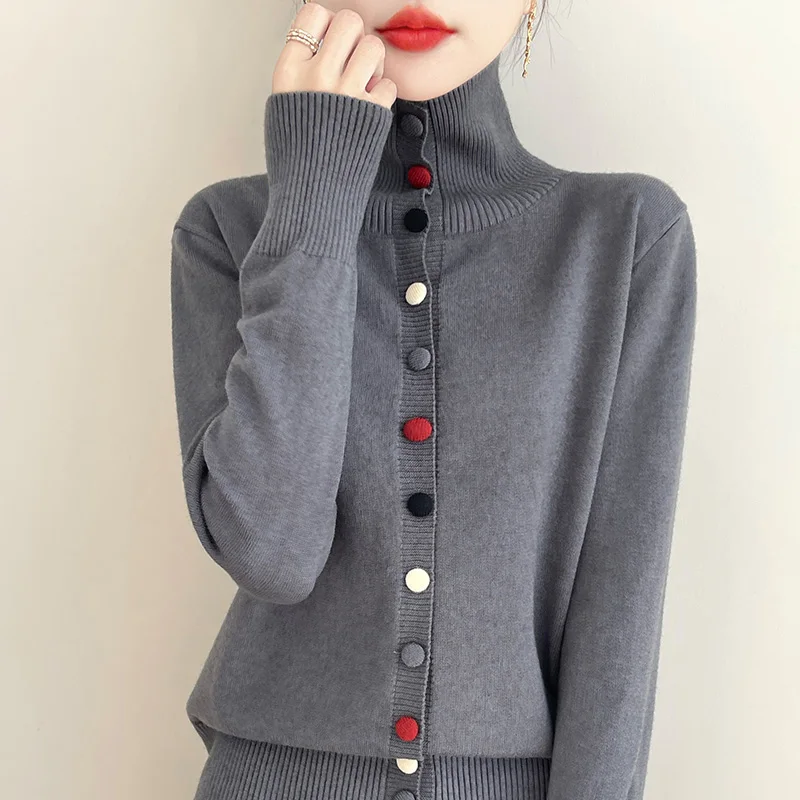1. Introduction: Why Eco-Friendly Cashmere Matters
Cashmere has long captured our hearts with its incredible softness, luxurious feel, and exceptional warmth. This premium fiber, cherished for centuries, offers unmatched comfort and elegance that makes it a treasured addition to any wardrobe. However, beneath this luxury lies a growing concern about the environmental and ethical impact of conventional cashmere production.
Traditional cashmere harvesting and processing have been linked to serious environmental issues including overgrazing, which leads to desertification in regions like Mongolia and China. Additionally, animal welfare concerns and exploitative labor practices have cast shadows over this beloved material. With approximately 70% of the world’s cashmere coming from regions already experiencing environmental degradation, the need for sustainable alternatives has never been more pressing.
Fortunately, a movement toward eco-friendly cashmere is gaining momentum. Throughout this guide, you’ll learn exactly what makes cashmere sustainable, how to identify trustworthy certifications, which brands are leading the charge in ethical production, and practical shopping tips to help you make informed decisions.
Estate Cloth stands at the forefront of this sustainable movement, offering premium cashmere with Grade A fibers under 16 microns that balance luxury with responsibility. Understanding the nuances of styling tips for cashmere cardigans can help you maximize the versatility of these sustainable investments.
2. Understanding the Environmental Impact of Conventional Cashmere
To truly appreciate eco-friendly cashmere, it’s important to understand the traditional production process and its consequences.
Conventional cashmere production begins with harvesting fiber from cashmere goats, primarily in Mongolia, China, and other Central Asian regions. While cashmere itself is a natural, biodegradable fiber, the methods used to produce it commercially often create significant environmental problems:
Land Degradation: Cashmere goats graze by pulling plants out by the roots rather than simply eating the tops. In Mongolia alone, approximately 70% of grasslands are degraded due to overgrazing, with cashmere production being a major contributor.
Desertification: As vegetation disappears, once-fertile lands turn to desert. The Gobi Desert in Mongolia is expanding by over 1,300 square miles annually, partly due to unsustainable herding practices.
Biodiversity Loss: Native wildlife suffers as their habitats and food sources disappear. Many species in cashmere-producing regions are now threatened or endangered.
Water Impact: Processing raw cashmere requires significant water usage and often involves chemical treatments that can pollute local water systems when not properly managed.
Carbon Footprint: Traditional cashmere production, processing, and global transportation all contribute to greenhouse gas emissions.
These environmental challenges underscore the urgent need for eco-conscious cashmere alternatives that maintain the luxury of this beloved fiber while addressing its ecological impact.
3. What Makes Cashmere Truly Eco-Friendly?
Genuine eco-friendly cashmere rests on three essential pillars that work together to ensure sustainability throughout the entire production process.
Animal Welfare
Ethical treatment of cashmere goats forms the foundation of sustainable practices. This includes:
- Humane Harvesting Methods: Traditional hand-combing collects the naturally shed undercoat without causing distress, unlike mechanical shearing which can harm animals and collect coarser fibers.
- Proper Care: Adequate shelter, nutrition, veterinary care, and protection from extreme weather conditions ensure healthy goats that produce quality fiber.
- Natural Living Conditions: Allowing goats to roam freely with appropriate herd sizes maintains their natural behaviors and well-being.
Environmental Stewardship
Sustainable cashmere minimizes ecological damage through:
- Responsible Grazing Management: Rotational grazing, appropriate herd sizes, and sustainable land management prevent overgrazing and soil degradation.
- Water Conservation: Reduced water usage and careful management of wastewater during processing protect local water systems.
- Chemical Reduction: Limiting or eliminating harsh chemicals in cleaning and dyeing processes reduces pollution.
- Energy Efficiency: Using renewable energy and optimizing transportation reduces the carbon footprint of production.
Social Responsibility
The human element cannot be overlooked in truly sustainable cashmere:
- Fair Wages: Ensuring herders and workers receive living wages that reflect the value of their specialized skills.
- Safe Working Conditions: Maintaining appropriate safety standards throughout the production process.
- Community Support: Investing in local communities through education, healthcare, and infrastructure development.
- Transparency: Providing clear information about sourcing, processing, and labor practices throughout the supply chain.
When evaluating sustainable cashmere, all three pillars must be present. A company might excel in animal welfare but fall short in environmental practices, or maintain excellent environmental standards while neglecting worker compensation. True sustainability requires balance across all areas.
Estate Cloth incorporates these principles into their comprehensive 12-point quality control process, ensuring their cashmere sweaters meet both exceptional quality and sustainability standards.
4. Different Types of Eco-Friendly Cashmere
When shopping for sustainable cashmere, you’ll encounter several distinct categories, each with different environmental impacts and characteristics.
Virgin Eco-Cashmere
This refers to newly produced cashmere that follows sustainable practices from the source. The fibers are collected directly from cashmere goats through ethical methods, primarily hand-combing during the natural molting season. Virgin eco-cashmere offers the highest quality and longevity when produced responsibly, with minimal processing required to maintain its natural properties.
Recycled Cashmere
Recycled cashmere transforms pre-consumer waste (manufacturing scraps) or post-consumer materials (used garments) into new products. The process typically involves sorting by color, shredding the material back into fibers, then respinning it into yarn. This approach significantly reduces waste, water consumption (up to 80% less), and chemical usage compared to producing new cashmere. While recycled cashmere may have slightly shorter fibers resulting in potentially less softness, modern techniques are dramatically improving quality.
Blended Sustainable Cashmere
These materials combine cashmere with other eco-friendly fibers like organic cotton, responsible wool, or innovative sustainable materials. Blends can improve durability, reduce environmental impact, and create more accessible price points while maintaining much of cashmere’s desirable properties.
| Type | Environmental Impact | Quality | Longevity | Price Point |
|---|---|---|---|---|
| Virgin Eco-Cashmere | Moderate (when responsibly sourced) | Excellent | Excellent | Highest |
| Recycled Cashmere | Lowest | Good to Very Good | Very Good | Moderate |
| Blended Cashmere | Low to Moderate | Good | Very Good | Lowest |
Estate Cloth specializes in premium Grade A cashmere with fibers under 16 microns and exceeding 36mm in length, offering exceptional softness while maintaining sustainability standards. For those specifically interested in recycled options, exploring top brands in recycled cashmere can provide additional sustainable choices.
5. Key Certifications and Standards for Sustainable Cashmere
When claims of sustainability abound, third-party certifications provide crucial verification that brands are actually meeting environmental and ethical standards. Here are the key certifications to look for when shopping for truly eco-friendly cashmere:
Sustainable Fibre Alliance (SFA)
This organization specifically addresses cashmere sustainability through rigorous standards covering:
– Land management and grazing practices to prevent desertification
– Animal welfare requirements ensuring humane treatment
– Herder welfare standards promoting fair labor practices
The SFA certification directly addresses the unique challenges of cashmere production at the source.
The Good Cashmere Standard®
Focused primarily on animal welfare, this certification ensures:
– Proper shelter and nutrition for cashmere goats
– Humane harvesting methods
– Sustainable land management practices
– Particular emphasis on practices in Inner Mongolia
Global Organic Textile Standard (GOTS)
While not cashmere-specific, GOTS certification covers the processing stages:
– Restrictions on chemical inputs
– Wastewater treatment requirements
– Energy use limitations
– Social criteria including fair labor practices
Look for GOTS certification on finished cashmere products to ensure responsible processing.
OEKO-TEX Standard 100
This certification focuses on the final product’s safety:
– Testing for harmful substances
– Ensures garments are non-toxic
– Confirms products are safe for human contact
OEKO-TEX addresses chemical concerns that may arise during dyeing and finishing.
Fair Trade Certification
This certification emphasizes the social aspects of production:
– Fair wages for workers
– Safe working conditions
– Community development programs
– Restrictions on child labor and forced labor
B Corp Certification
B Corp status evaluates a company’s entire social and environmental performance:
– Overall corporate responsibility
– Transparency
– Accountability across all business practices
This certification indicates a holistic commitment to sustainability.
When shopping, look for these certification logos on product tags, packaging, or website descriptions. Multiple certifications often indicate a more comprehensive commitment to sustainability across different aspects of production.
Understanding these standards complements knowledge about how to choose high-quality cashmere by ensuring your purchase is both luxurious and responsible.

6. Top Sustainable Cashmere Brands and Their Practices
When seeking eco-friendly cashmere, certain brands stand out for their comprehensive commitment to sustainability. These companies have been selected based on transparent sourcing, verified environmental practices, social responsibility initiatives, and quality products.
Estate Cloth
Estate Cloth exemplifies premium sustainable cashmere through exceptional quality control and responsible practices. Their Grade A cashmere features fibers under 16 microns—the gold standard for softness—while their longevity-focused design philosophy ensures each piece remains wearable for years. Their rigorous 12-point quality testing includes pilling resistance and colorfastness verification, while their inclusive sizing makes luxury accessible to more customers.
Naadam
This brand works directly with Mongolian herders to ensure fair wages while implementing sustainable grazing practices. They’ve invested in clean water access and veterinary programs for goat herders while eliminating middlemen to improve working conditions.
Riley Studio
Focusing on recycled cashmere, Riley Studio creates seasonless designs that minimize waste. Their closed-loop production system and plastic-free packaging demonstrate commitment to reducing environmental impact throughout their supply chain.
Reformation
Combining recycled cashmere with virgin fibers from certified sustainable sources, Reformation provides transparency through detailed environmental impact reports for each product. Their carbon-neutral shipping and factory working conditions set high industry standards.
Stella McCartney
A pioneer in sustainable luxury, this brand uses recycled cashmere and innovative regenerative farming techniques. Their cashmere products feature detailed supply chain transparency and cruelty-free certification.
Outerknown
Their responsibly sourced cashmere emphasizes worker welfare with fair trade certification. The brand’s repair program extends product lifespan, demonstrating their circular economy approach.
These brands represent different approaches to sustainable cashmere, from recycled innovations to responsible virgin fiber sourcing. For those seeking specific styles, cashmere wool cardigans offer versatile options that combine sustainability with classic design.
7. How to Identify Greenwashing in the Cashmere Industry
As consumer demand for sustainable products grows, some brands use misleading marketing tactics—known as greenwashing—to appear more eco-friendly than they actually are. Being able to identify these deceptive practices is crucial when shopping for genuinely sustainable cashmere.
Warning Signs of Greenwashing
Vague, Undefined Terminology
Be skeptical of broad claims like “eco-friendly,” “natural,” or “green” without specific explanations of what these terms mean in practice. Legitimate sustainable brands will provide concrete details about their environmental initiatives.
Missing Verification
Sustainability claims without third-party certification or verification should raise red flags. Reputable eco-friendly cashmere brands will proudly display their certifications and explain what standards they meet.
Partial Information
Some brands highlight one sustainable aspect while ignoring other important factors. For example, they might emphasize recycled packaging while avoiding discussion of their fiber sourcing practices or labor conditions.
Suspiciously Low Pricing
True sustainable cashmere involves fair labor practices, careful processing, and responsible herd management—all of which affect pricing. If cashmere is marketed as both sustainable and surprisingly inexpensive, question how those standards are being maintained.
Lack of Supply Chain Transparency
Ethical brands are typically open about where and how their cashmere is sourced, processed, and manufactured. Limited or missing information about these aspects may indicate greenwashing.
Truly sustainable brands recognize that cashmere cardigans are worth the investment when produced responsibly, and they’re willing to share detailed information about their practices rather than relying on vague marketing terminology.
8. Practical Guide to Shopping for Eco-Friendly Cashmere
Armed with knowledge about what makes cashmere sustainable, you’re ready to put this information into practice when shopping. Here’s how to navigate the marketplace effectively:
Reading Labels and Product Descriptions
Look beyond marketing buzzwords to find specific information about:
– Fiber origin and sourcing methods
– Processing techniques
– Certifications (SFA, GOTS, etc.)
– Company sustainability policies
Pay special attention to details about animal welfare practices, environmental initiatives, and social responsibility programs.
Questions to Ask Brands
When information isn’t readily available, don’t hesitate to inquire directly:
– “Where specifically is your cashmere sourced from?”
– “What animal welfare standards do you maintain?”
– “How do you ensure fair compensation for herders and workers?”
– “What environmental initiatives do you have in place at the sourcing location?”
– “Can you share information about your processing methods and chemical usage?”
Reputable brands will respond transparently and thoroughly.
Understanding Pricing Factors
Quality sustainable cashmere typically costs more because it reflects:
– Fair wages throughout the supply chain
– Environmentally responsible processing methods
– Third-party certifications and auditing
– Higher-quality fibers with better longevity
Consider these price differences an investment in both quality and ethical production.
Physical Quality Indicators
Whether shopping online or in person, assess quality through:
– Softness without excessive sheen (extremely shiny cashmere often indicates chemical treatments)
– Resilience when gently stretched
– Minimal initial pilling
– Even coloration
– Clear labeling of cashmere percentage and grade
Estate Cloth’s emphasis on Grade A cashmere under 16 microns represents the highest quality standard, providing both luxury and durability.
Online Research Techniques
Before purchasing:
– Read the brand’s sustainability or corporate responsibility page
– Look for specific projects and initiatives rather than general statements
– Check for third-party reviews of their environmental claims
– Investigate their certification claims through certification websites
For those seeking specific styles, browsing women’s cashmere pullovers can provide examples of quality sustainable options with detailed product information.

9. Caring for Your Cashmere to Enhance Sustainability
Proper care significantly extends the life of your cashmere garments, which is perhaps the most sustainable practice of all. By maintaining your pieces well, you reduce the need for replacements and maximize the value of the resources already used in production.
Washing Techniques
Gentle cleaning preserves both fiber quality and environmental resources:
– Hand wash using lukewarm water (never hot)
– Choose pH-neutral, biodegradable wool detergents
– Avoid conventional fabric softeners, which can damage fibers
– Gently press out excess water—never wring or twist
– Lay flat to dry away from direct sunlight or heat sources
For minimal environmental impact, wash only when necessary rather than after every wear. Often, airing a garment overnight will refresh it without requiring washing.
Storage Solutions
Proper storage prevents damage during off-seasons:
– Clean garments before storing long-term
– Use breathable cotton storage bags rather than plastic
– Place cedar blocks nearby (not directly touching) to deter moths
– Fold rather than hang to prevent stretching
Understanding how to fold and store cashmere safely is essential for maintaining your garments between seasons.
Repair and Maintenance
Extend garment life through proactive care:
– Address small holes or weak areas immediately before they expand
– Remove pills gently with a cashmere comb or sweater stone
– Consider professional repair for significant damage
– Store with care to prevent moth damage
With proper maintenance, quality cashmere garments can last decades rather than seasons, dramatically improving their environmental footprint.
End-of-Life Considerations
When a cashmere item is truly beyond repair:
– Explore recycling programs specifically for textiles
– Consider upcycling into new items (pillows, baby clothes, etc.)
– Donate to textile recycling programs rather than discarding
Remember that Estate Cloth garments are specifically designed for longevity, maintaining their quality even after years of proper care.
10. Is Eco-Friendly Cashmere Worth the Investment?
One of the most common questions about sustainable cashmere concerns its higher price point. Let’s examine whether the investment is justified:
Why Does Sustainable Cashmere Cost More?
Ethical Labor Practices
Fair wages for herders and factory workers significantly increase production costs compared to operations that minimize labor expenses through questionable practices.
Sustainable Processing
Environmentally responsible cleaning, dyeing, and finishing methods often cost more than conventional chemical-intensive processes. Water recycling systems, energy-efficient equipment, and non-toxic dyes all contribute to higher production expenses.
Quality Control
Rigorous testing and inspection processes, like Estate Cloth’s 12-point quality control system, ensure each garment meets both sustainability and performance standards.
Scale Considerations
Many sustainable cashmere producers operate at smaller scales, missing the cost advantages of mass production but gaining benefits in quality oversight and reduced environmental impact.
Long-term Benefits Justifying the Price
Superior Longevity
Quality sustainable cashmere typically lasts significantly longer than conventional alternatives. A well-made, properly cared for cashmere sweater can remain wearable for 10+ years, compared to just 1-2 seasons for lower-quality options.
Cost-Per-Wear Calculation
When analyzed by cost-per-wear, premium cashmere often outperforms less expensive alternatives:
– $300 sustainable cashmere sweater worn 200 times over 10 years = $1.50 per wear
– $80 conventional sweater worn 30 times over 2 seasons = $2.67 per wear
Versatility Value
Estate Cloth’s focus on timeless designs ensures pieces remain stylish beyond seasonal trends, multiplying wearing opportunities and increasing value.
Ethical Satisfaction
The peace of mind from supporting responsible environmental and social practices adds intangible but real value to sustainable purchases.
Oversized cashmere sweaters represent particularly good investments due to their adaptability across multiple settings and seasons.
Cashmere Wrap Sweaters, Women's Cashmere Pullovers
$75.89 Select options This product has multiple variants. The options may be chosen on the product pageCashmere Cable Knit Sweaters, Women's Cashmere Pullovers
Price range: $111.82 through $112.93 Select options This product has multiple variants. The options may be chosen on the product pageCropped Cashmere Sweaters, Women's Cashmere Pullovers
$155.77 Select options This product has multiple variants. The options may be chosen on the product pageOversized Cashmere Sweaters, Plus Size Cashmere Sweaters, Women's V-Neck Cashmere Sweaters
$136.87 Select options This product has multiple variants. The options may be chosen on the product page- Price range: $108.11 through $130.03 Select options This product has multiple variants. The options may be chosen on the product page
Striped Cashmere Sweaters, Women's Cashmere Pullovers
$139.68 Select options This product has multiple variants. The options may be chosen on the product page
11. Alternatives to Traditional Cashmere
While sustainable cashmere represents a significant improvement over conventional production, some consumers may seek different options based on personal values, budget constraints, or specific needs. Several alternatives offer comparable benefits with different sustainability profiles:
Natural Fiber Alternatives
Alpaca Wool
This South American fiber offers exceptional warmth with less environmental impact than conventional cashmere. Alpacas have soft padded feet that don’t damage grazing lands, and they consume less food and water than cashmere goats.
Yak Wool
Sourced primarily from the Tibetan Plateau, yak wool provides comparable warmth to cashmere with a slightly coarser feel. Yak herding typically involves traditional nomadic practices that maintain grassland health.
Organic Merino Wool
Certified organic merino offers excellent temperature regulation with verified sustainable farming practices and animal welfare standards.
Plant-Based Options
Organic Cotton-Cashmere Blends
These combinations reduce the cashmere content while maintaining softness through the addition of organic cotton, creating more accessible price points with lower environmental impact.
TENCEL™ Lyocell
This wood-based fiber from sustainably managed forests offers silky softness and excellent drape, though with less insulating properties than cashmere.
Innovative Alternatives
Recycled Wool Blends
Post-consumer recycled wool mixed with other fibers creates warm, soft fabrics with significantly reduced environmental impact.
QMilk
This innovative fiber made from waste milk proteins offers surprising softness and biodegradability, though it’s not yet widely available.
When deciding between alternatives and sustainable cashmere, consider your specific needs for warmth, durability, and maintenance, along with your personal sustainability priorities.
For versatile styling ideas that work across fiber types, exploring styling cashmere cardigan versatile looks provides inspiration applicable to many material choices.

12. Why Choose Premium Cashmere for Sustainability?
The connection between quality and sustainability represents one of the most overlooked aspects of eco-friendly fashion. Premium cashmere, like Estate Cloth’s Grade A fibers under 16 microns, offers distinct sustainability advantages beyond production practices:
Longevity Reduces Overall Consumption
Higher-quality cashmere fibers maintain their integrity through more wearing and washing cycles. This extended lifespan means:
– Fewer replacement purchases over time
– Reduced overall resource consumption
– Less textile waste entering landfills
– Lower lifetime environmental impact
A single premium garment that lasts 10+ years creates substantially less environmental burden than multiple lower-quality pieces replaced every 1-2 seasons.
Production Quality Often Correlates with Better Practices
Producers focusing on premium cashmere typically:
– Implement more careful fiber selection processes
– Maintain stronger relationships with herding communities
– Invest in proper land management for long-term fiber quality
– Utilize skilled craftspeople paid fair wages
These quality-focused practices often naturally align with sustainability principles, creating a virtuous cycle of better production.
Timeless Design Transcends Trends
Premium cashmere brands like Estate Cloth emphasize:
– Classic silhouettes that remain relevant across seasons
– Versatile pieces that work in multiple settings
– Quality construction that maintains shape and appearance
– Colors chosen for longevity rather than fleeting trends
This approach creates garments that remain desirable and wearable for many years, avoiding the waste associated with trend-chasing fast fashion.
Quality cashmere represents a significant initial investment, but one that pays dividends through exceptional performance and reduced environmental impact over time. For those seeking specific styles that exemplify this approach, cashmere turtlenecks offer versatile options designed for long-term wear.
13. Conclusion: Making Informed Choices for a Sustainable Wardrobe
Throughout this guide, we’ve explored the complex world of eco-friendly cashmere, from understanding its environmental impacts to identifying truly sustainable options. Armed with knowledge about certifications, production methods, and quality indicators, you’re now equipped to make choices that align with both your values and your desire for luxury.
The key takeaways for identifying genuine eco-friendly cashmere include:
– Looking for specific sustainability claims backed by reputable certifications
– Understanding the three pillars of sustainability: animal welfare, environmental stewardship, and social responsibility
– Recognizing quality indicators that suggest longevity and responsible production
– Being willing to invest more initially for better long-term value and reduced environmental impact
Your purchasing decisions have real power to influence the cashmere industry. Every time you choose sustainable options, you send a clear message about the practices you support. As consumer demand for responsible cashmere grows, more producers are implementing better methods—proof that individual choices collectively drive meaningful change.
The beauty of sustainable cashmere lies in its ability to balance luxury with responsibility. By choosing pieces that are ethically produced, properly cared for, and designed to last, you can enjoy the exceptional comfort and elegance of cashmere while knowing your choices support both people and planet.
Estate Cloth’s commitment to premium Grade A cashmere fibers under 16 microns, combined with rigorous quality control and sustainable practices, exemplifies this balanced approach—where exceptional quality and responsibility come together in truly timeless pieces.







